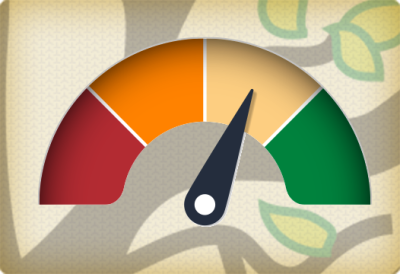
The blog will discuss the challenges that arise with applying the GreenScreen List Translator method in an automated tool, the impact of those challenges, and how those challenges are being addressed.
Background
A growing number of manufacturers, brands, and retailers are developing proactive chemicals management policies and practices that exceed regulatory requirements. This trend is driven by desires to minimize business and financial risk, respond to customer demand, and get ahead of regulations. Knowledge of chemicals in products and supply chains is a prerequisite to proactively manage those chemical. A common next step is for organizations to use a list-based approach to identify chemicals to avoid and/or track.
GreenScreen List Translator™ is a list-based hazard screening approach designed to quickly identify chemicals of high concern. The GreenScreen criteria for a chemical of high concern is consistent with authoritative and regulatory agencies and include chemicals that are persistent, bioaccumulative and toxic (PBTs) and chemicals that are carcinogenic, mutagenic, or reproductive or developmental toxicants or equivalent concern (CMRs). GreenScreen List Translator is a unique form of a list-based approach in that a) it is built from a transparent set of scientific criteria, b) it is comprehensive - identifying over 2200 chemicals and chemical groups as chemicals of high concern, and c) it is automated and scalable.
The List Translator score is generated by searching over forty hazard lists developed by authoritative scientific bodies convened by international, national and state governmental agencies, intergovernmental agencies, and NGOs. The lists used in the List Translator methodology are called GreenScreen Specified Lists. The presence or absence of a chemical of interest on a list is translated to a specific adverse health outcome(s) and hazard level(s), and the hazard(s) are compared to the criteria to assign a score.
There are four possible List Translator scores:
- LT-1 means a chemical has been identified as a chemical of high concern
- LT-P1 means a chemical may be a chemical of high concern and more research is recommended
- LT-UNK means presence on a list(s) does not meet the criteria for a chemical of high concern
- NoGSLT means the chemical is not present on any of the GreenScreen Specified Lists
The Challenge of Chemical Groups
Lists that associate chemicals with hazards often include discrete chemicals as identified by chemical name and chemical abstract service number (CASRN) as well as “chemical groups” (e.g., lead compounds), which are composed of “member” chemicals. The authoritative bodies that publish GreenScreen Specified Lists use one of the following general strategies when listing chemical groups:
- Fixed List: In some (rare) cases, the authoritative body publishing the list further defines a complete list of the members they intend to be included in the chemical group by chemical name and CASRN.
- Semi-Fixed List: The authoritative body publishing the list specifies some members of the group by chemical name and CASRN. However, the authoritative body intends the chemical group to include but not be limited to those specified members.
- Open List: In many cases, the authoritative body publishing the list does not provide any additional details on the members they intend to be included in the chemical group.
A primary challenge inherent in using any semi-fixed or open list that contains one or more chemical groups is identifying the specific members of the chemical group by chemical name and CASRN. For GreenScreen, this task is performed by expert organizations licensed by Clean Production Action:
- GreenScreen Profilers: toxicology firms that are licensed to perform GreenScreen and GreenScreen List Translator assessments. The assessor uses scientific expertise on a per chemical basis to determine if the chemical being assessed is a relevant member of one or more chemical groups.
- GreenScreen List Translator Automators: organizations that have integrated GreenScreen List Translator methodology into automated tools. While automation provides tremendous efficiency in obtaining a List Translator score for a chemical of interest, automation does not include a case by case evaluation to determine if the chemical being assessed is a relevant member of one or more chemical groups. Instead, a method for populating members of chemical groups must be specified in a way that it can be automated.
There are different methods an organization can use to populate members of chemical groups. One can take a literal approach, only including the specific chemicals and CASRN listed by the authoritative body that publishes the list. One can cast a slightly broader net, including chemicals in the group that are listed by any of the authoritative bodies that publish a list including the chemical group. One can use a published list of members of chemical groups developed by an organization other than a listing body. For example, the American Chemistry Council publishes the Global Automotive Declarable Substances List (GADSL) to assist companies in complying with regulatory requirements and specifies members of applicable chemical groups. One can also cast a broader net, including any chemical meeting specific requirements for molecular structure such as presence of a specific element (e.g., lead) or functional group. A project that uses this type of approach is the evolving Chemical Group Population Project hosted on the Chemical Hazard Data Commons and being led by Healthy Building Network.
The two Licensed GreenScreen List Translator Automators are currently using different methods to populate chemical groups. This can result in different GreenScreen List Translator scores for the same chemical from the different automated tools.
Solutions
To ensure greater consistency and accuracy in List Translator results, Clean Production Action is working in close partnership with the two Licensed GreenScreen List Translator Automators to develop a common method to populate chemical groups in automated tools. This is a complex task involving engagement from multiple stakeholders including chemists, toxicologists and members of organizations that publish lists. We are breaking new ground, as no one to date has developed a common and widely agreed upon method for populating chemical groups on hazard lists.
The long-term shared vision is to develop a transparent, scientific, peer reviewed methodology for populating members of chemical groups. This effort will continue to be led by the Healthy Building Network working in close collaboration with Clean Production Action. The peer review will engage scientific experts as well as authoritative bodies publishing the lists. The task will be to ensure consistency with the intent of the listing bodies as well as the scientific/toxicological relevance. We anticipate this process to take 18-24 months to complete.
As an interim solution, Clean Production Action plans to publish a static list of members of chemical groups on a quarterly basis to bring the automated tools into alignment. This will be done by reviewing current best practices from each Automator for completeness, accuracy and relevance and combining the results. The plan is to begin by casting a broader net that can be further refined and potentially narrowed through the peer review process in developing the long-term solution. The first list is anticipated to be published and implemented in Q1 2018.
Until the interim chemical group solution is implemented, users of GreenScreen List Translator scores should be aware that List Translator scores generated with different List Translator automated tools may produce different results.


